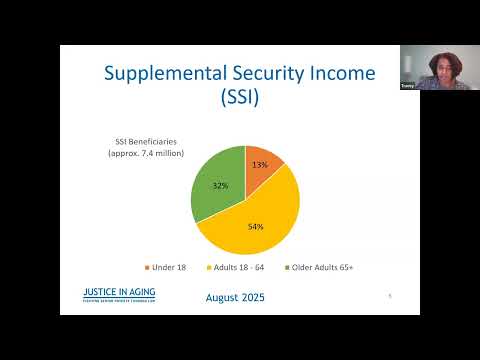
Testimony Before The New York State Board Of Elections Regarding Draft Voting Machines Regulations Reflecting Changes In Election Law Mandated By Hava On Tuesday December 20th, 2005
Liz Krueger
July 15, 2010
Good morning. My name is Liz Krueger, and I represent the 26th Senatorial District, which includes Midtown and the East Side of Manhattan. I am here this morning to address the Draft Voting Machine Regulations that reflect the changes in Election Law mandated by the Help America Vote Act (HAVA), which requires every state to modernize its voting systems. In the testimony that follows, I will raise a number of concerns regarding HAVA implementation plans, and make recommendations as to how the state should proceed in order to ensure that New Yorkers’ votes are securely and accurately recorded in all future elections.
As a State Legislator, I submit that we, the Legislature, failed the residents of New York State regarding HAVA compliance. For over two years the Legislature dithered, while every other state in the union passed legislation addressing HAVA. Only when New York State was in danger of being fined for non-compliance did the leadership finally address the matter. Unfortunately, the Legislature decided to forego a uniform statewide standard for voting machinery, in favor of local decision-making by 57 county Boards of Election. The package of legislation that we passed will not guarantee a transparent, well-administrated and reliable voting system for New York State and now it is up to the localities to show greater wisdom than the Legislature.
An unfortunate result of the Legislature’s lack of urgency with regard to HAVA is that we are now left in the precarious position of having a little more than nine months to get the new voting systems and regulations operational. If we do not have specific systems in place by particular dates, then New York State will have failed to comply with a federal mandate. One of these requirements, the statewide voter database, is supposed to be completed by January 1st. Unfortunately, state election officials have stated publicly that it could take up to 18 months before the database is completed. As a result, New York State is in danger of losing $20 million in federal dollars that was earmarked for the voter database.
HAVA requires the state to begin replacing its voting machines by the 2006 election. In New York City alone, close to 1,500 machines will be required in order to satisfy HAVA requirements. By 2007, New York City will need to purchase another 8,500 machines. The fact is that we are simply running out of time. Last week, Mr. Stanley Zalen testified at an Assembly hearing that the new voting machine guidelines would not be finalized until late February and that a list of certified machines would not be made available until mid-April at the earliest. Essentially, county Boards of Election will have four months at most to choose their machines, purchase them, set them up, train poll workers, educate the public and pray for a fair election. This is the nightmare scenario that many of us have been warning others about since the initial passage of HAVA. I strongly urge the State Board of Elections to seriously look into acquiring a federal waiver on HAVA implementation until 2007. There are far too many variables and concerns left unaddressed and the timetable does not provide enough time to ensure a smooth transition to the new machines, especially for large election boards, such as New York City.
The Draft Voting Machine Guidelines require a great deal of work in order to guarantee New Yorkers that their voting system is accurate and secure. Simply put, the guidelines are vague and unspecific. I have also been informed that the HAVA Citizen’s Advisory Committee was not give an opportunity to make recommendations to these guidelines. This fact does not bode well for our hopes of keeping this an open and transparent process. After reading the guidelines, the overwhelming sense one is left with is that the guidelines hold Paper Based Optical Scanning (PBOS) technology to a higher standard than the Direct Recording Electronic (DRE) equipment. The requirements for PBOS are exhaustive and I believe this a good thing. Unfortunately, the DRE standards leave a number of questions, including most importantly testing. Now when it comes to testing the new voting machines, there is no doubt that testing must be done in public with a large number of machines. Unfortunately, the guidelines seem to allow for vendors to waive testing, in favor of submitting test reports that they have conducted with independent authorities. The vendors should be required to supply several machines without charge and members of the public must be able to observe the entering of test votes, the printing of each voter-verified record and the tally of the final vote. These machines should also be subjected to a “red-test,” which would certify that the machines are not able to be hacked into.
I am particularly concerned about the guidelines that address the source code of the voting machines. Specifically, the guidelines allow for vendors to define the usage of the term “proprietary” and do not address the need for independent public review of the software. It is crucial that the source code not be considered as proprietary and is held in the public domain for independent appraisal. I am reminded of the analogy that many voting machine experts have made between voting systems and gambling machines in Nevada. In Nevada, the Gaming Control Board has access to all gambling software, the programs are constantly checked and updated, manufacturers are scrutinized before licensing, and gamblers have a right to an immediate investigation. Compare these standards with our present or possibly future guidelines and the point is obvious.
The guidelines indicate that the new voting machines will be part of a network of machines with communication capabilities. This is a dangerous road to tread down given the potential for system-wide hacking, and I recommend that each machine should stand alone and render totals specific to the machine. The Board of Elections should further be required to inspect equipment before and after elections to make sure there is no hardware or software to support communications, as well as to allow candidates and political parties to inspect machines before and after elections. Furthermore, I recommend that the State Board of Elections urge the Legislature to institute criminal investigations and felony penalties if communication capability is present in the equipment.
Finally, I urge the State Board of Elections to adopt the recommendations in the draft response to the guidelines from the NYC Board of Elections and these recommendations are sound.
Still, the most critical issue facing the state concerns which machines will be certified. New Yorkers have a right to the most reliable, secure, and auditable voting system currently available. There are presently two types of voting machines being considered to replace our aging lever machines. The first one is a Direct Recording Electronic voting system, also known as a DRE. DRE’s typically resemble PCs with touch-screen capability and they pose a very serious threat to the integrity of the electoral process. The second type of voting machine available is called a Paper Ballot Optical Scanner system, also known as PBOS. Optical scanners use a paper ballot marking system, which is also compatible with a highly sophisticated ballot-marking machine, developed for use by persons with disabilities.
I strongly urge the City of New York and the counties of New York State to reject DRE systems as it selects the HAVA-compliant voting technology that New Yorkers will be using for many years to come. As I see it, PBOS systems should be used for two reasons: 1) A PBOS system is more accurate, secure and recountable than a DRE system, and 2) A PBOS system will cost the City significantly less money in both the short and the long term.
Recent reports by the California Institute of Technology (CalTech) and the Massachusetts Institute of Technology (MIT) found that touch screen DRE systems had the highest rates of spoiled, uncounted and unmarked ballots. Manually counted paper ballots had the lowest average incidence of spoiled, uncounted, and unmarked ballots, followed closely by optically scanned ballots.
A reliable voting technology is a basic requirement for the integrity of the New York State’s elections. Equally important, that technology must be transparent and inspire voter confidence. The State’s mandate for voter verified paper ballots guarantees that an election can be audited if the Board of Elections determines that an audit is necessary, and decides to undertake one. However, in counties that choose a DRE system, votes will be counted in a relatively opaque electronic process. Computer technologists overwhelmingly agree that it is impossible to ensure that these systems are not flawed or corrupted. If the Board of Elections decides to audit a DRE process, counting all of the voter-verified ballots and reconciling the discrepancies with the electronic tally will be time-consuming and expensive.
In addition to being the most accurate, secure, transparent and accessible voting technology available, PBOS is also the least costly. According to New Yorkers for Verified Voting, in a voting district with three lever machines, the cost for DRE machines will be $36,000. The cost for the PBOS machines with a ballot-marking machine will only be $10,000. Maintenance and storage costs – which will not be paid by federal funds – are significantly lower for the optical scanners than for the DRE machines. Because PBOS systems are simpler and more straightforward, it is both easier and cheaper to train election assistance workers for PBOS systems. No one knows the expected life of a DRE machine, but some predict that they will have to be replaced in five years, to be paid by either the state or local government. Finally, the federal Election Assistance Commission has estimated that their Voluntary Voting System Standards will be available in early 2008; PBOS systems are guaranteed to meet those standards, but DRE systems may not.
Both NYPIRG and Common Cause share my concern that a strong lobby effort from voting machine manufacturers is influencing New York’s voting technology selection process, on a county by county basis. NYPIRG reported that the voting-machine industry, companies that produce both DRE and PBOS machines, spent about $1 million dollars lobbying solely for DRE systems at the State Capitol in 2004. Since DRE’s are far more expensive and require greater maintenance, the lobbyists are being paid to push the DRE’s. Lobbyists and manufacturers are clearly not prioritizing ensuring a New Yorkers right to vote, but rather prioritizing their pocketbooks.
The significance of this decision must not be underestimated. HAVA creates an opportunity for the counties of New York State to replace our outdated lever machines with modern voting equipment; but neither the federal government, nor the State has taken the necessary steps to ensure that our new equipment is reliable, secure and transparent. The final decision for HAVA compliance now comes down to the local level and I strongly urge that the decision makers choose PBOS systems for New York City.
Thank you for the opportunity to testify today.
Share this Article or Press Release
Newsroom
Go to NewsroomSenator Krueger Submits Testimony Opposing Con Ed Rate Increases
November 5, 2025


Senator Krueger's October 2025 Update
October 31, 2025

